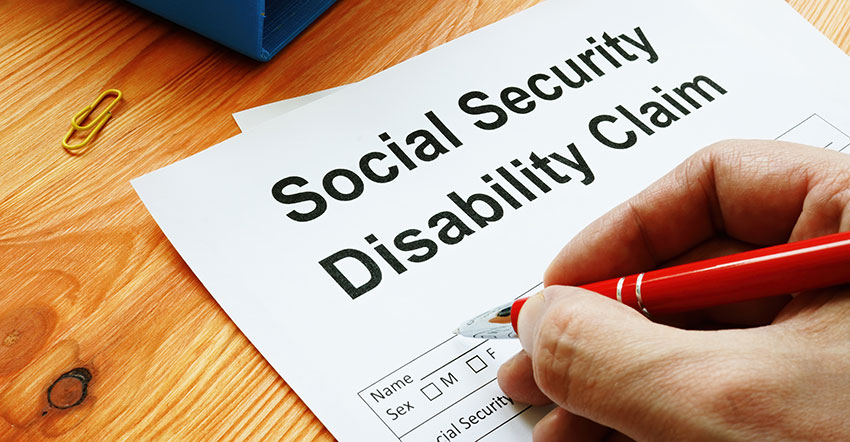Not everyone knows that they could potentially access free federal assistance during challenging times. Whether financial struggles, high medical expenses, or other kinds of difficulty, all kinds of help are available. However, government aid is generally misunderstood. Many people believe that just because they are going through difficult times, they automatically qualify for support. That’s not always the case. Only people who are eligible for the support can take advantage of the assistance available.
Resources for Finding Assistance Opportunities
Government assistance programs come in a wide range of options. From child care to health care to nutrition, and more, the government aims to support people under different circumstances. Even though no two programs are exactly alike, they are all government funded and offer help to those who are eligible recipients. Benefits.gov was made by the government to make it easier to learn about the different options.
Benefits.gov
This is a tool you can use to find federal assistance programs you may be eligible for. You have two options when you visit the website:
Benefits Finder: This is a questionnaire intended to evaluate the best option for you depending on your circumstances. It is important to answer every question. The survey will search through all government aid programs so that you can see what you are likely eligible for. While it offers programs that you could qualify for, it is not guaranteed that you will receive benefits. The only way to know if you definitely qualify is to submit an application for the program that fits your needs.
Browse Benefits: You can browse benefits by category or agency in addition to using the Benefits Finder tool. These options can be found when you search by category:
- Agriculture and Environmental Sustainability
- American Indian and Alaska Native
- Disaster Relief
- Family and Children Services
- Education and Training
- Employment and Career Development
- Financial Assistance
- Food and Nutrition
- Grants
- Healthcare and Medical Assistance
- Housing and Public Utilities
- Immigration and Refugee Assistance
- Loans
- Military: Active Duty and Veterans
- Social Security and Retirement
- Volunteer Opportunities
While looking by category is popular, people also have the option to review assistance through different agencies. This includes the United States Department of Housing and Urban Development (HUD), the United States Department of Agriculture (USDA), and more.
Options for Federal Assistance
There are tools available to help you to find assistance programs. However, when looking for benefits, you should find out more information about some specific federal programs. Popular programs include:
- Housing Choice Voucher Program
- Low Income Home Energy Assistance Program (LIHEAP)
- Medicaid
- Children’s Health Insurance Program (CHIP)
- Supplemental Nutrition Assistance Program (SNAP)
- Special Supplemental Food Program for Women, Infants, and Children (WIC)
- Child Nutrition Programs
- Supplemental Security Income (SSI)
Housing Choice Voucher Program
For people who are eligible, the government provides housing vouchers that can be used to cover housing expenses like rent. It is essential to remember that not all properties will take these vouchers as payment. Why does that matter? That means the number of properties people can occupy is limited.
In addition to accepting vouchers as payment, the properties must also pass local Public Housing Authority (PHA) inspections. You can submit your application and get more details about this program and other housing assistance options in your city at your local PHA. You’ll probably be added to a waiting list if your application is accepted. Keep in mind that the waiting lists are lengthy, and it could take months or even years before you get help.
Low Income Home Energy Assistance Program (LIHEAP)
A lot of Americans have trouble paying their power bills. Because of this, the federal government established a program to deal with this problem. Benefits are given to qualifying applicants through home energy bill assistance, house weatherization, and small energy-related home repairs. Receiving this assistance lowers the chance of accidents caused by poor heating or cooling, which is a great benefit. If you need more information, simply call the LIHEAP toll-free hotline at 1-866-674-6327.
Medicaid
The cost of healthcare is yet another significant expense for Americans. As a result, unpaid medical bills are the main cause of debt reported to collections agencies. Medicaid can assist eligible low-income people and families in obtaining medical coverage at a reduced cost or even for free. Despite being a federal program, it is managed by the states acting in accordance with federal guidelines.
Children’s Health Insurance Program (CHIP)
Families may occasionally find themselves in challenging circumstances. Families may benefit from CHIP if they are unable to pay the high private insurance premiums but are not eligible for Medicaid. Children who participate in this program are eligible for low-cost medical and dental insurance up until the age of 19. Medical exams, screenings, hospital care, preventive care, medical supplies, and other services are covered under this insurance.
Supplemental Nutrition Assistance Program (SNAP)
Americans deal with many large expenses like housing, utilities, and health insurance. Additionally, many people deal with the price of groceries. For this reason, the United States Department of Agriculture (USDA) offers SNAP to qualified participants. Each month, participants in this program will receive money on an Electronic Benefit Transfer (EBT) card. The money can be spent at stores that accept this type of government assistance as payment. The funds can only go towards getting food items that are eligible!
Special Supplemental Food Program for Women, Infants, and Children (WIC)
Some groups of people might require more specific help, which is the purpose of WIC. This program was created particularly for women, expectant mothers, newborns, and kids up to the age of five. Vouchers, food, help in finding other resources, and education are all available to qualified participants! You can learn more and submit an application at a WIC office closest to you.
Child Nutrition Programs
The government also places a strong emphasis on helping kids. It does this through a number of child nutrition programs such as:
National School Lunch Program (NSLP)
This program is beneficial to both nonprofit private schools and public schools. During the school year, NSLP offers eligible students lunches that are nourishing and reasonably priced or free.
School Breakfast Program (SBP)
Children must have breakfast to start the day off right. Schools and residential childcare facilities that run breakfast programs are reimbursed by SBP.
Special Milk Program (SMP)
There are plenty of benefits that come along with drinking milk, especially as a child. SMP is available to qualified schools, such as those that take part in either the School Breakfast Program or the National School Lunch Program. This program pays the schools back for the milk they provide!
Supplemental Security Income (SSI)
Seniors, disabled people, and the blind that are low income may be eligible for SSI benefits. This help includes monthly cash payments (For 2025, the monthly maximums are $967 for an individual or $1,450 for a couple). The money from this program can be used by the participants for housing, clothes, food, and other needs.
Summary
There is a wide range of local, state, and federal assistance programs available. To explore the options available to you, visit websites like Benefits.gov. This website can assist you in discovering potential options that might work well for your circumstance. They also give visitors the option to browse various options by agency or category.
It is crucial to keep the various kinds of support choices in mind. Popular forms of assistance include:
- Housing Choice Voucher Program
- Low Income Home Energy Assistance Program (LIHEAP)
- Medicaid
- Children’s Health Insurance Program (CHIP)
- Supplemental Nutrition Assistance Program (SNAP)
- Special Supplemental Food Program for Women, Infants, and Children (WIC)
- Child Nutrition Programs
- Supplemental Security Income (SSI)
Getting the assistance you require when facing financial difficulties is necessary. Take some time to look into any options or services that could be of assistance to you!



